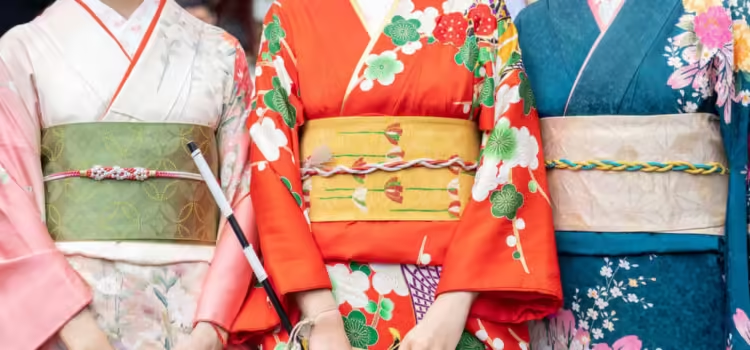Introduction
The kimono is a symbol of Japan’s rich cultural heritage, embodying both tradition and elegance. This iconic garment has transcended its historical roots to become a global fashion statement. Whether it’s a traditional kimono robe or a contemporary kimono dress, its versatility and timeless style continue to captivate fashion enthusiasts worldwide. In this article, we’ll explore the significance of the kimono, its various forms, and how it has evolved over time. We’ll also address common questions about kimonos to help you better appreciate this beautiful garment.
The History and Significance of the Kimono
The kimono, which literally means “thing to wear” in Japanese, is a traditional garment with a history spanning over a thousand years. Originating from the Heian period (794-1185), the kimono has evolved from a simple, utilitarian garment into a complex piece of clothing with intricate designs and ceremonial significance. Traditionally worn in Japan, the kimono is characterized by its T-shaped silhouette, long sleeves, and wrap-around design.
Also Visit: 60+ Sports trivia Questions and Answers
Also Visit: Which of the following should be supported by technology?
Also Visit: What is customer-managed relationship (CMR)?
Cultural Symbolism
In Japanese culture, the kimono represents grace, beauty, and respect. It is often worn during significant events such as weddings, tea ceremonies, and festivals. Each color and pattern of the kimono can convey different meanings and reflect the wearer’s personal taste, social status, and the season. For instance, vibrant colors and elaborate designs are common for festive occasions, while more subdued colors and patterns are chosen for formal or somber events.
Types of Kimonos
1. Kimono Robe
The kimono robe is perhaps the most recognized form of the kimono in Western fashion. It retains the traditional elements of the kimono but is often adapted for casual or semi-formal wear. Made from luxurious fabrics like silk or satin, the kimono robe is often worn as a stylish cover-up or a relaxed loungewear piece. Its flowing design and wide sleeves contribute to a relaxed yet elegant appearance.
2. Kimono Dress
The kimono dress represents a modern twist on the traditional kimono. This variation combines the classic kimono style with Western dress elements, making it suitable for various occasions. Kimono dresses may feature a wrap-around design, similar to the traditional kimono, but are often tailored to enhance the wearer’s silhouette. These dresses are popular for both everyday wear and special events, offering a chic and contemporary alternative to the classic kimono.
3. Kimono Party Attire
Kimonos are also making waves as party attire. The kimono party trend embraces the garment’s traditional aesthetic while incorporating modern fashion sensibilities. At a kimono party, you might find guests dressed in a range of kimono-inspired outfits, from elaborate, ornate kimonos to minimalist, stylish variations. The choice of fabric, color, and design often depends on the theme of the event, allowing attendees to showcase their personal style while celebrating the kimono’s rich heritage.
The Kimono’s Evolution in Modern Fashion
The kimono has evolved significantly over the years. From its origins as a ceremonial garment to its current status as a fashionable statement piece, the kimono’s journey through history is a testament to its enduring appeal. Modern designers have embraced the kimono’s versatility, incorporating its elements into everything from high fashion runway shows to everyday streetwear.
Global Influence
The kimono’s influence extends far beyond Japan. In recent years, international designers have drawn inspiration from this traditional garment, leading to its integration into global fashion trends. Kimonos are now featured in various forms, from high-end couture collections to casual wear, demonstrating their adaptability and timelessness.
Sustainable Fashion
In addition to its aesthetic appeal, the kimono is also gaining attention for its role in sustainable fashion. Many traditional kimonos are crafted from high-quality materials and are designed to last for generations. As the fashion industry moves towards more sustainable practices, the kimono’s longevity and classic design make it an appealing choice for those seeking eco-friendly wardrobe options.
How to Wear a Kimono: Tips and Styling Advice
1. Choose the Right Kimono
When selecting a kimono, consider the occasion, your personal style, and the season. For formal events, opt for a traditional kimono made from luxurious fabrics like silk. For casual wear, a kimono robe or kimono dress may be more appropriate. Pay attention to the colors and patterns, as they can greatly influence the overall look.
2. Pair with Modern Pieces
To create a contemporary look, pair your kimono with modern clothing items. For instance, a kimono robe can be layered over jeans and a T-shirt for a chic, casual outfit. A kimono dress can be styled with stylish accessories and heels for a polished look suitable for various occasions.
3. Accessorize Thoughtfully
Accessories play a crucial role in complementing the kimono. Choose accessories that enhance the garment’s elegance without overwhelming it. For example, delicate jewelry and simple belts can accentuate the kimono’s design without distracting from its beauty.
4. Master the Art of Layering
Layering is key to achieving a sophisticated look with a kimono. For instance, a kimono robe can be worn over a fitted dress or outfit, adding a touch of elegance while keeping the overall look balanced. Experiment with different layering techniques to find what works best for you.
FAQs About Kimonos
What is the difference between a traditional kimono and a kimono robe?
A traditional kimono is a formal garment with a rich cultural history, often worn for ceremonial purposes. It features specific patterns, colors, and styles that reflect its traditional significance. A kimono robe, on the other hand, is a more casual adaptation of the traditional kimono, often used for everyday wear or as a stylish cover-up. It maintains the classic kimono silhouette but is typically made from lighter, more comfortable fabrics.
Can I wear a kimono dress for a formal event?
Yes, a kimono dress can be a suitable choice for a formal event, depending on its design and material. Look for kimono dresses made from luxurious fabrics like silk or satin and choose designs that incorporate elegant patterns and details. Pair the dress with sophisticated accessories to complete the formal look.
How do I care for my kimono?
Proper care is essential to maintain the kimono’s beauty and longevity. Follow the care instructions provided with the garment, and consider professional cleaning for delicate fabrics. Store your kimono in a cool, dry place away from direct sunlight to prevent fading and damage.
Are kimonos suitable for all body types?
Yes, kimonos are designed to be versatile and flattering for various body types. The flowing silhouette and adjustable tie sash make the kimono adaptable to different shapes and sizes. Choose a kimono that suits your personal style and fits comfortably to highlight its best features.
Where can I buy a kimono?
Kimonos can be purchased from specialty stores, boutiques, and online retailers. Look for reputable sellers who offer authentic and high-quality kimonos. For a more traditional experience, consider visiting a store that specializes in Japanese clothing and accessories.
Conclusion
The kimono is more than just a garment; it is a symbol of Japan’s cultural heritage and a testament to timeless elegance. From the classic kimono robe to the modern kimono dress and kimono party attire, this versatile piece of clothing continues to inspire and enchant people around the world. Whether you’re attending a formal event or looking for a stylish addition to your wardrobe, the kimono offers a unique blend of tradition and contemporary fashion. By understanding its history, exploring its various forms, and following styling tips, you can fully appreciate and embrace the beauty of the kimono.
For More Information Visit Our Homepage:






